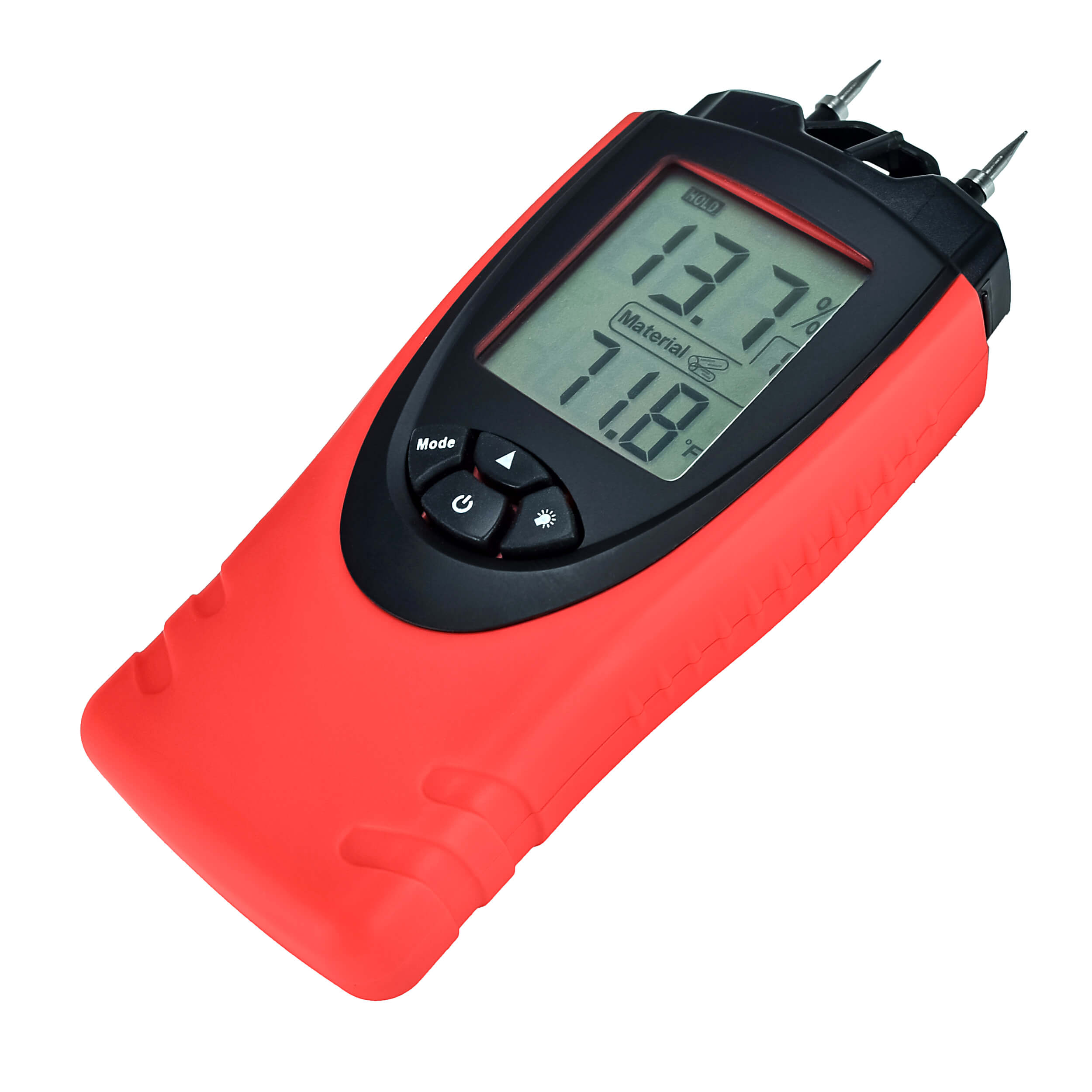Comprehending the Different Sorts Of Moisture Meters and Their Applications
Comprehending the Different Sorts Of Moisture Meters and Their Applications
Blog Article
Delve Into the World of Moisture Meters: Whatever You Need to Know
In the world of moisture meters exists a globe of precision and practicality that often goes unnoticed. These gadgets, while relatively straightforward, hold a wide range of information that can considerably impact numerous markets and applications. Understanding just how moisture meters run, the different kinds offered, and their varied uses can shed light on their relevance in making sure high quality and performance. By checking out the complexities of dampness meters, one can discover a beneficial device that transcends simple measurement, supplying insights that can make a significant difference in countless fields.
How Moisture Meters Work
Moisture meters run by measuring the electrical conductivity or capacitance of products to determine the wetness web content existing. These meters are very useful devices throughout various industries, consisting of farming, building and construction, and woodworking. By making use of various methods such as pinless or pin-type modern technology, moisture meters give accurate analyses that assist professionals make informed choices.
Pin-type moisture meters function by placing the sharp pins into the product being checked. The electric conductivity between the pins is then gauged, with higher moisture levels bring about raised conductivity. Moisture Meter. On the other hand, pinless wetness meters utilize electromagnetic signals to check a larger area without causing any type of damages to the material's surface. These meters are excellent for rapidly evaluating wetness levels in large locations or completed products.
No matter the approach made use of, wetness meters play a critical role in preventing problems such as mold and mildew development, structural damages, or product flaws triggered by excess wetness. Understanding how these meters work is crucial for making sure the quality and integrity of materials in numerous applications.
Sorts Of Moisture Meters
Provided the vital function dampness meters play in numerous industries, it is vital to recognize the various kinds available to professionals for properly examining wetness degrees - Moisture Meter. There are mainly two main kinds of wetness meters: pinless and pin-type dampness meters

On the other hand, pinless moisture meters make use of electromagnetic sensor plates to check a larger area of the product without triggering any damage. This kind appropriates for swiftly scanning huge locations and is typically utilized for flooring, wall surfaces, and ceilings. Pinless meters are hassle-free for taking readings on finished surfaces without leaving any visible marks.
Both kinds of dampness meters have their benefits and are selected based on the details demands of the work handy. Understanding the distinctions in between these kinds is important for specialists to make exact dampness analyses.
Applications Throughout Industries
Building experts rely on dampness meters to examine the wetness degrees in structure materials like timber, concrete, and drywall, which anchor is essential for keeping structural stability and avoiding problems like rot or mold. The flooring sector utilizes wetness meters to determine the moisture web content in subfloors before mounting various floor coverings, avoiding costly problems due to excess dampness. In the food sector, wetness meters are utilized to check and regulate moisture degrees in products such as grains, nuts, and dried out fruits to preserve quality and high quality.
Tips for Utilizing Moisture Meters
Use the dampness meter's calibration settings to guarantee precise readings when measuring the dampness content in numerous products. In addition, make sure the meter is set to the proper moisture range for the material you are gauging to get the most accurate outcomes.
When utilizing a pin-type moisture meter, insert the pins to the ideal depth advised for the material being evaluated. This guarantees that the wetness analyses are drawn from the appropriate deepness within the product, supplying an extra precise depiction of its moisture web content. For pinless moisture meters, remember to maintain appropriate contact with the product's surface to get reputable readings.
Frequently inspect and replace the batteries in your dampness meter to stop imprecise analyses due to low power. When not in usage to extend its life-span and maintain its precision, Store the meter in a dry and secure place. By adhering to these suggestions, you can optimize the efficiency of your dampness meter and obtain specific wetness material dimensions across various products.
Maintenance and Calibration
To ensure the precision of dampness content dimensions, normal maintenance and calibration of the dampness meter are necessary actions in its correct performance. Calibration changes the dampness meter to ensure that it offers dependable and regular results.
Calibration ought to be performed occasionally, especially if the dampness meter is made use of often or in important applications where accurate dimensions are called for. By keeping and adjusting the dampness meter routinely, customers can rely on the accuracy of the wetness Web Site material measurements acquired.
Verdict

To conclude, wetness meters play a critical function in numerous sectors by precisely gauging the moisture content of materials. Understanding how these gadgets work, the various types readily available, and appropriate maintenance and calibration are essential for obtaining dependable outcomes. Whether in production, construction, or agriculture, making use of dampness meters aids guarantee quality control and efficiency in procedures.

In verdict, moisture meters play a crucial function in different industries by precisely measuring the More about the author dampness content of products.
Report this page